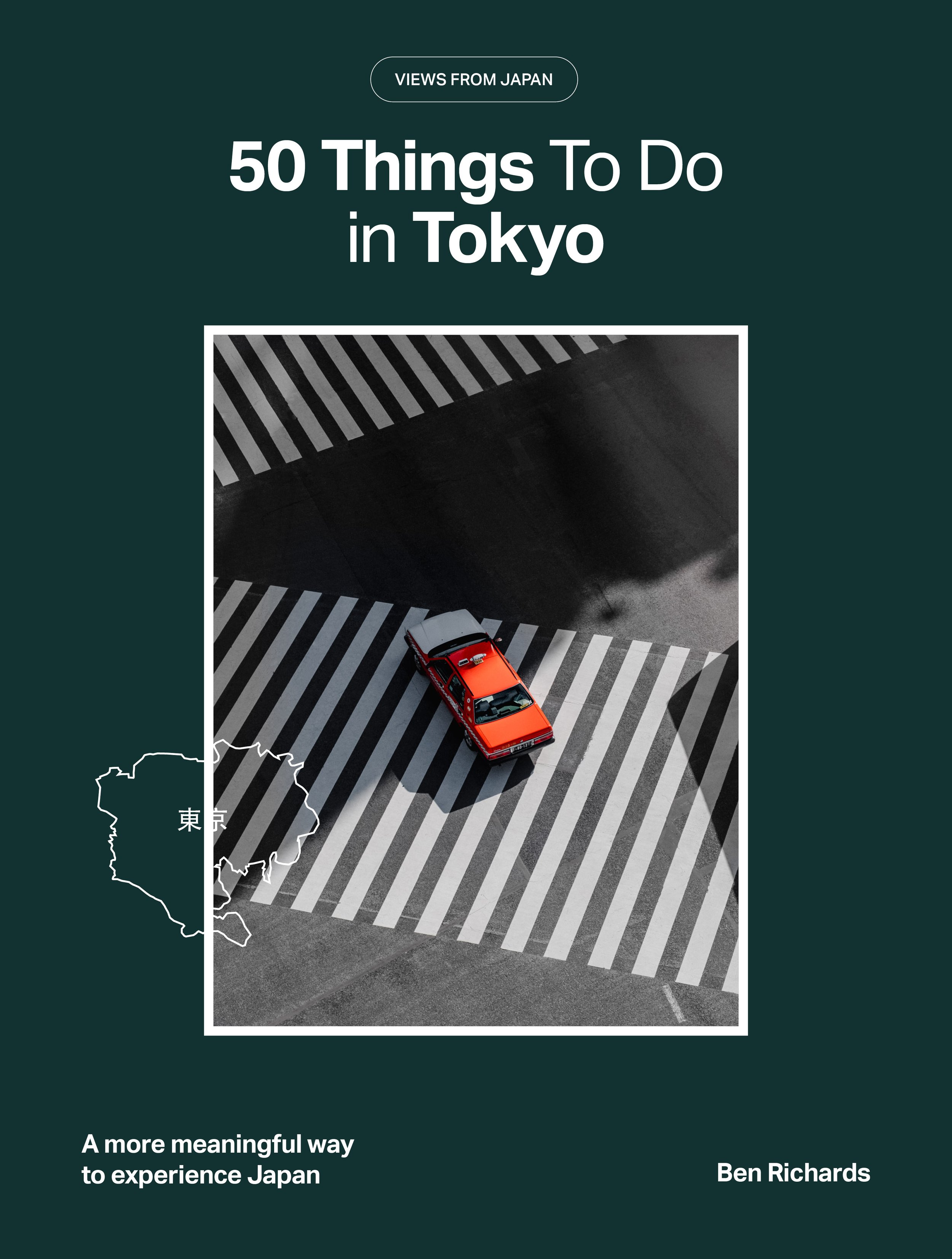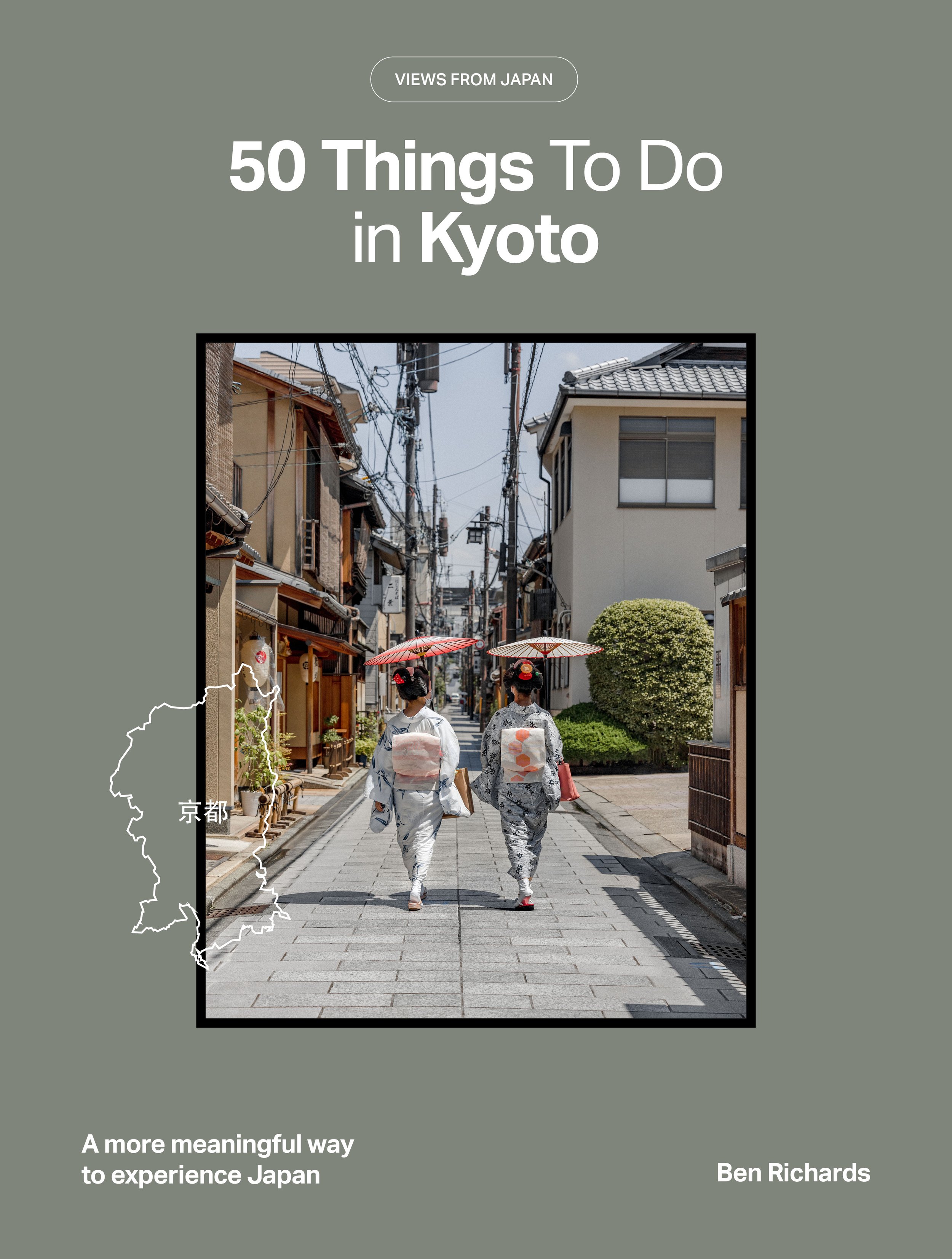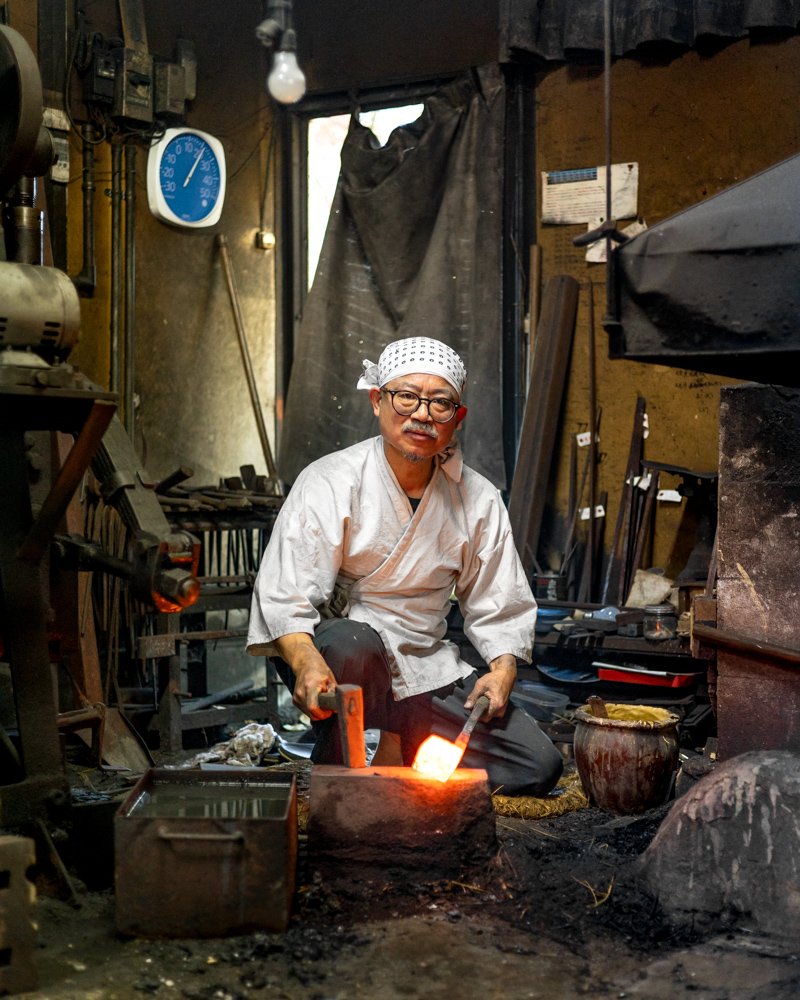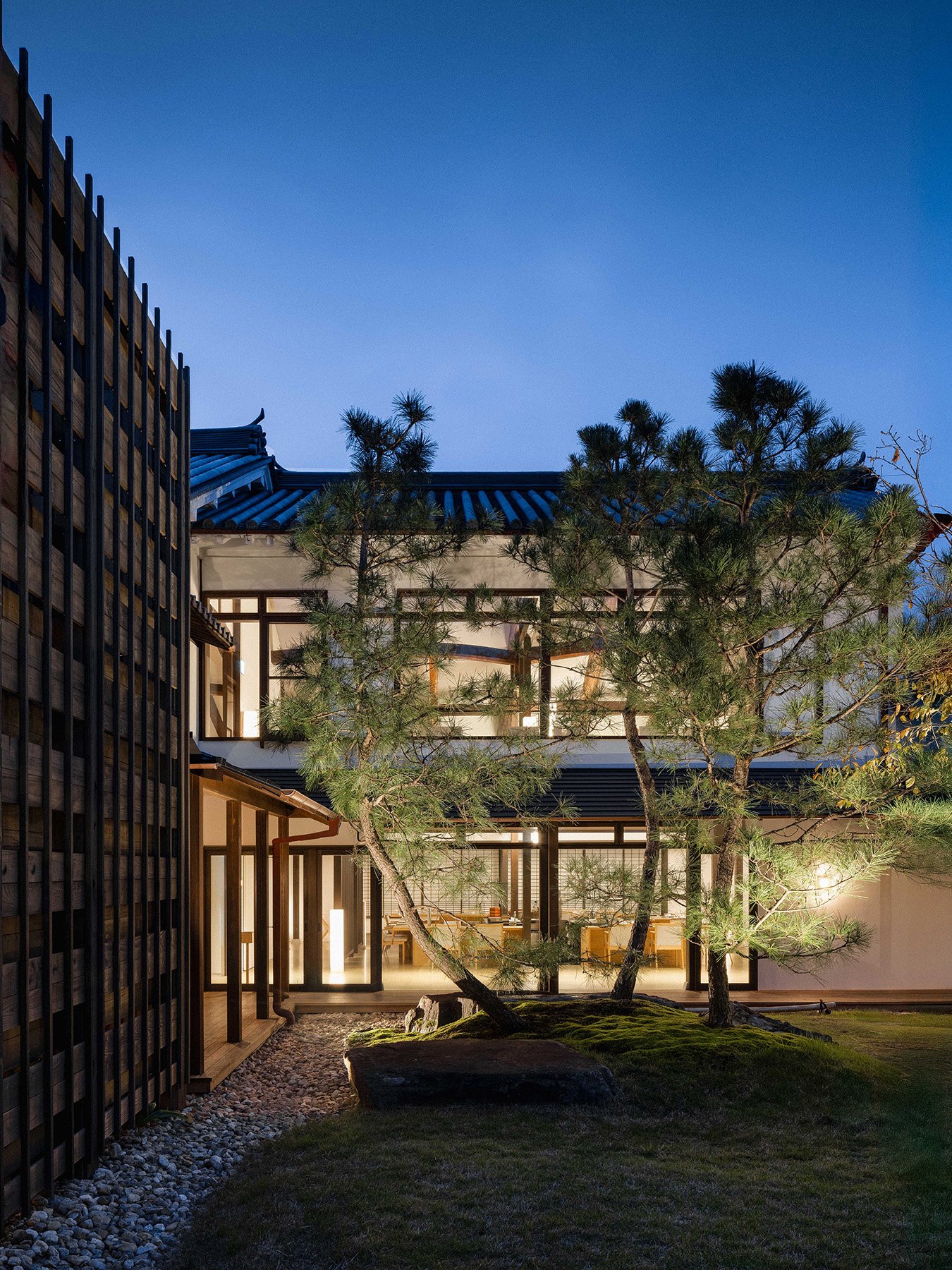Handmade in Kanazawa: 10 Unmissable Things to Do in Japan’s Craft Capital
Rich with history, Ishikawa Prefecture’s Kanazawa (金沢) has a story to tell around every corner. From historic geisha districts and Edo Period architecture to traditional handicrafts and a world-class fish market; it’s one of the best places to experience Japan’s diverse and unique culture. Only a two hour Shinkansen ride from Tokyo, Kanazawa and Noto Peninsula come highly recommended as something a little different for your next Japan itinerary. Come with me as I share my top 12 locations and experiences, as well as some tips, tricks and local highlights to help you along your way.
1. Explore Edo Period Architecture in the Historic Higashi Chaya District
Translating to ‘Eastern Teahouse District’, Higashi Chaya is one of three small geisha districts in Kanazawa. Machiya‑lined streets and Edo Period teahouses make up this beautifully preserved area that was first established in 1820 as an entertainment district for rich merchants and nobility. The daytime sees kimono‑clad tourists stroll the streets with shopping bags full of gold leaf and the evenings bring a soft warm glow from each building, providing an other‑worldy atmosphere as you navigate your way through the small side streets and alleyways.
2. Feast Your Eyes on Kanazawa’s Iconic Gold Leaf Creations
Kanazawa is famous for many crafts, with gold leaf being the most treasured. Over 99% of Japan’s gold leaf production happens in Kanazawa, mostly by local artisans. Their handiwork can be seen all over Japan at temples, and on furniture and lacquerware. The gold sheets are so thin, they will disappear when you rub them with your fingers. Nothing goes to waste, and off-cuts are used in the food industry for gold leaf decoration on posh meals and ice creams – which can of course be sampled throughout the city.
3. Immerse Yourself in the Colours of Kenrokuen Garden
Known as 'The Garden of Six Sublimities', Kenrokuen used to form part of the original Kanazawa Castle, and is also one of Japan’s top three gardens. Across the garden there are six different areas, each created to feature trees and plants specific to the four seasons. I was lucky to be there for autumn and experience an explosion of colour and some crisp morning reflections across the ponds.
4. Step Back in Time at the Nagamachi Samurai District
Moving on from Kenrokuen, Nagamachi (長町) Samurai District is a 10‑minute walk across the city and is home to narrow alleys and cobbled streets that used to be home to samurai residents and their families. The best preserved example of the area’s historic culture is the Nomura Clan Samurai Residence, where guests can explore the full home, its artifacts and a private tea room.
Discover more lesser-known destinations, bucket list experiences and unique hotels in my brand new guidebook, Views from Japan.
5. Discover Seafood Delicacies at Omicho Market
Nicknamed ‘Kanazawa’s Kitchen’, Omicho Market has been Kanazawa’s largest fresh food market ever since the Edo Period. A short walk from all of the main attractions, this is where you can sample some of Ishikawa’s famed sashimi and sushi delicacies, as well as over 200 stalls and restaurants selling seafood, rice bowls and kitchenware. The market gets busy around lunchtime and be sure to arrive early to beat the midday rush.
6. Experience True Omotenashi at a Geiko Teahouse
Geiko (芸子) are the epitome of Japanese hospitality; they dedicate their lives to mastering traditional Japanese arts and train for over 10 years, striving to become the perfect entertainers in an art form that is often misunderstood. Kanazawa is home to only five remaining private geiko (or ‘geisha’) teahouses and limited numbers of guests can enjoy an evening being entertained by these supremely skilled artisans. Teahouses have strict ‘ichigensan okotowari’ policies meaning ‘no entry without introduction’, so be sure to plan ahead to not miss this experience.
Discover Hundreds More Unique Destinations and Experiences Across Japan
7. Learn the Art of the Samurai Sword
Kanazawa has strong roots in Japan’s samurai era, with a dedicated historic samurai district, as well as museums and restaurants dedicated to the ancient art. Those who want to take the samurai experience to the next level can enjoy a private samurai demonstration and class, to learn the sword-making process from start to finish and even place an order for their own custom built sword.
8. Weave Your Own Basket with a Bamboo Craftsman
Located around a one hour drive into the mountains surrounding Kanazawa City is the home of bamboo artisan, Chifuyu Enomoto, one of only 100 remaining contemporary bamboo artists in Japan. Enomoto-san has been practicing the art of bamboo weaving for over 50 years, and painstakingly produces a range of bespoke products including bowls, containers and tea trays.
9. Marvel at the Fine Details of Locally Produced Lacquerware
Known locally as ‘Kanazawa Shikki’, the art of lacquerware has taken many different forms over the years, from decorative tea containers to ceremonial pieces found in Buddhist temples. I spent an afternoon with Nishimura Sensei, a local artisan specialising in ‘maki-e’, meaning lacquerware decorated with gold or silver onto incredibly fine designs and artworks. No detail is left untouched, and to see these pieces up-close was a truly special experience.
10. Brave the Rugged Landscapes of the Noto Peninsula
Home to rough seas, rugged coastlines and oceanside temples, Ishikawa’s Noto Peninsula is the ideal add‑on to your trip to Kanazawa. The peninsula itself extends around 100km out of the top of the prefecture, and is best explored by car. Also along the outer coast are plenty of ryokans and onsen towns including Wajima and Wakura Onsen.
Tips & Tricks for a Visit to Kanazawa
1. Take your time – Despite being a relatively small city, Kanazawa is a treasure trove of discovery, so be sure to allocate plenty of time to explore.
2. Book in advance – Be sure to check available bookings for the crafts and culture experiences to avoid disappointment.
3. Save space for souvenirs – With plenty of shopping available in Kanazawa, you will want to take some gifts home with you.
4. Pack a raincoat – Kanazawa’s proximity to the ocean can provide an ever-changing adventure with the weather.
5. Be prepared to wake up early – The early mornings can be some of the most serene times to explore Kanazawa, when the locals are rising and before the tourists have made their way into town.
Best Time to Visit
Kanazawa really can be enjoyed all year round. During winter, snowfall contrasts beautifully with traditional machiya-lined streets. Spring sees a flood of cherry blossom across the city’s parks and gardens. Outdoor performances and traditional festivals can be enjoyed through the summer months. And finally autumn has unrivalled foliage, adding a whole new dimension to any visit to Ishikawa’s capital.
Getting Around
The best way to arrive in Kanazawa is by Shinkansen, taking only 2.5 hours from Tokyo Station. When leaving the station be sure to leave via the south exit to see Kengo Kuma’s amazing wooden tori gate structure. From the station, the town is a short bus or taxi ride away and once in the city centre everything is easy walking distance.
Looking for somewhere to stay? Here’s a complete list of hotels to book in Kanazawa.
Experience
Create Kutani Ware Matcha Bowls at Kanazawa’s “To-an” Workshop
Step into the private home workshop of internationally renowned ceramics artist Masayoshi Yoshioka for an intimate introduction to Kutani ware. Under Yoshioka’s expert guidance, you’ll craft matcha bowls on a pottery wheel - a space rarely opened to the public. As your creation dries, enjoy tea and Kanazawa’s famed confections while learning about the 400-year legacy of this treasured craft.
Produced in partnership with Japan National Travel Organisation and Wondertrunk
Photography and words by Ben Richards
Are You Ready to Explore Japan Like a Local?
You’ve watched countless YouTube videos, endlessly trawled outdated blogs and are lost in a sea of TikTok trends. You’re not sure where to start when it comes planning your Japan trip. Why not let me do the work for you? In Views from Japan I share everything I have learnt from travelling extensively in Japan over five years. Inside, I give you all the tools you need to create a truly meaningful Japan itinerary, and I can’t wait to share it with you!




































